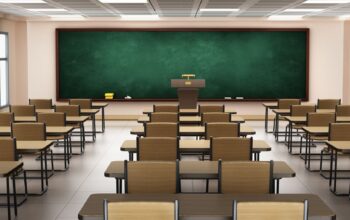New research opposes the common view of politicians that bridging the class-based learning gap hinges on improving disadvantaged kids’ work ethic and mindset.
They found that no more than nine percent of the academic gap between rich and poor students can be attributed to differences in these social and emotional characteristics. The team recommends that politicians focus on bridging the structural reasons such as differences in the quality, resourcing and funding of the schools they attend, the absence in many countries of high-quality preschool options and a lack of extracurricular resources and out-of-school opportunities compared with their wealthier peers.
“Educational inequality cannot be solved through social and emotional learning. The idea that children can overcome structural disadvantage by cultivating a growth mindset and a positive work ethic overlooks the real constraints many disadvantaged students face, and risks blaming them for their own misfortune,” said Dr. Rob Gruijters from the University of Cambridge.
In a UK Cabinet Office survey in 2015, it was revealed that politicians think disadvantaged and vulnerable children would benefit most from social and emotional learning. This social and emotional learning is also big business in many countries, like the US, where the industry was valued at $1.5 billion in 2020. Many of these businesses claim they can help bridge this achievement gap, a claim that this study aims to disprove.
“Developing social and emotional skills is hugely valuable for children, but the evidence suggests it has little to do with why low-income students are more likely to struggle academically. According to our results, it is not a magic bullet for tackling the socioeconomic achievement gap,” ,” said Assistant Professor Nicolas Hübner from the University of Tübingen.
To get their results the team, which also included the University of Zürich, studied more than 240,000 15-year-olds across 74 countries. They then analyzed both the science test scores and school-relevant socio-emotional skills, of the most and least advantaged quartile of students in each country.
The average difference in science test results between the top and bottom 25 percent of students was 70.5 points; equivalent to almost three years of schooling. The academic benefits that disadvantaged children derive from socio-emotional skills, however, were found to be relatively similar to those gained by advantaged children.
While children from wealthier backgrounds were found to have somewhat higher levels of socio-emotional skills on average, the impact of these discrepancies on the overall achievement gap was modest and made no more than nine percent impact on the learning gap. These findings, published in Sociology of Education, proved fairly consistent across countries and for different academic subjects.
“Students who lack the right mindset may perform less well at school, but that may be because their academic performance has eroded their self-belief, not the other way round,” said Co-author Isabel Raabe.
One of the reasons why socio-emotional skills are not a major driver of achievement inequality is that, despite the differences between them, both advantaged and disadvantaged children were found to have reasonably high levels of these skills overall.
For example, during the PISA psychometric assessment, 84 percent of disadvantaged children, and 90 percent from the advantaged quartile, agreed with the statement “I feel proud that I have accomplished things”.
Produced in association with SWNS Talker
Source: Published without changes from Zenger News




